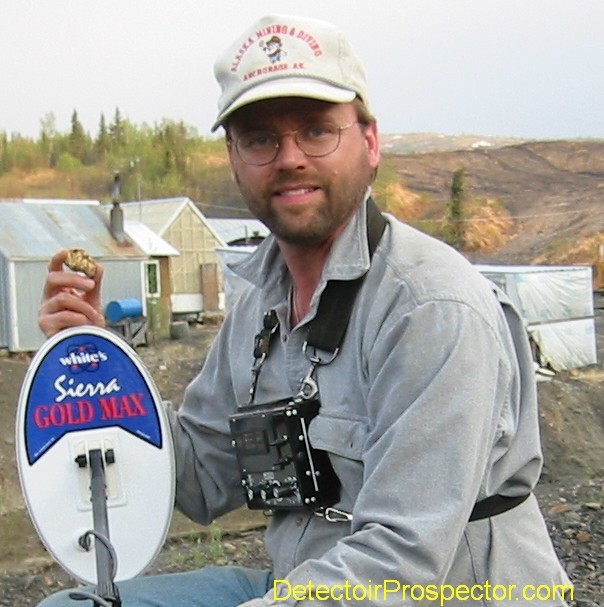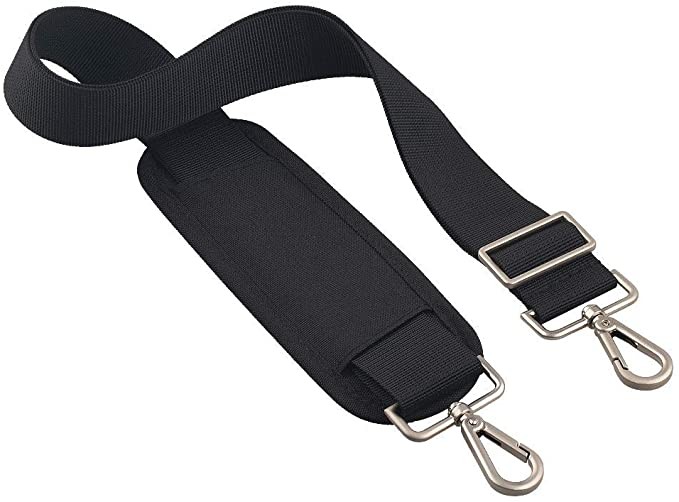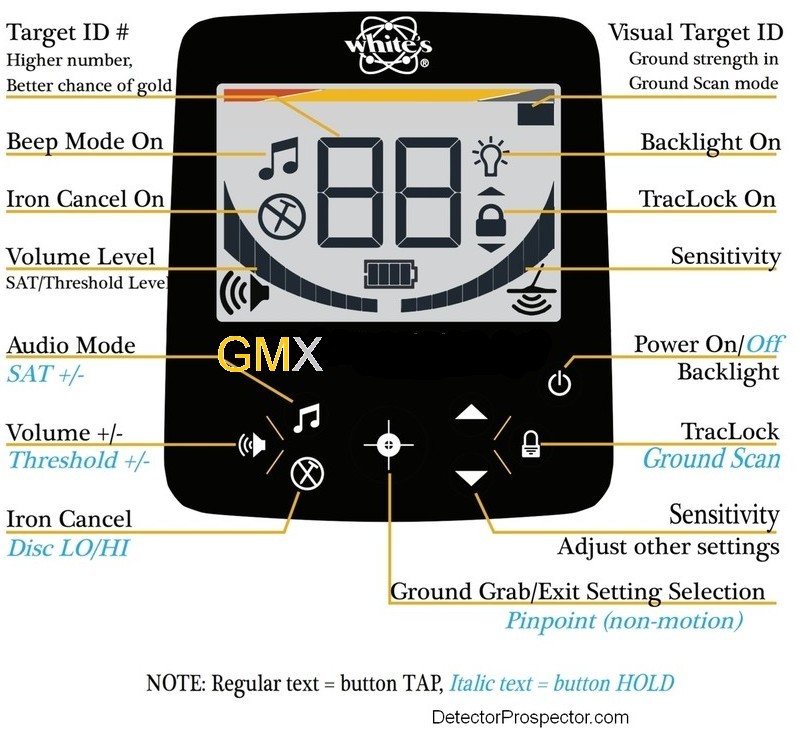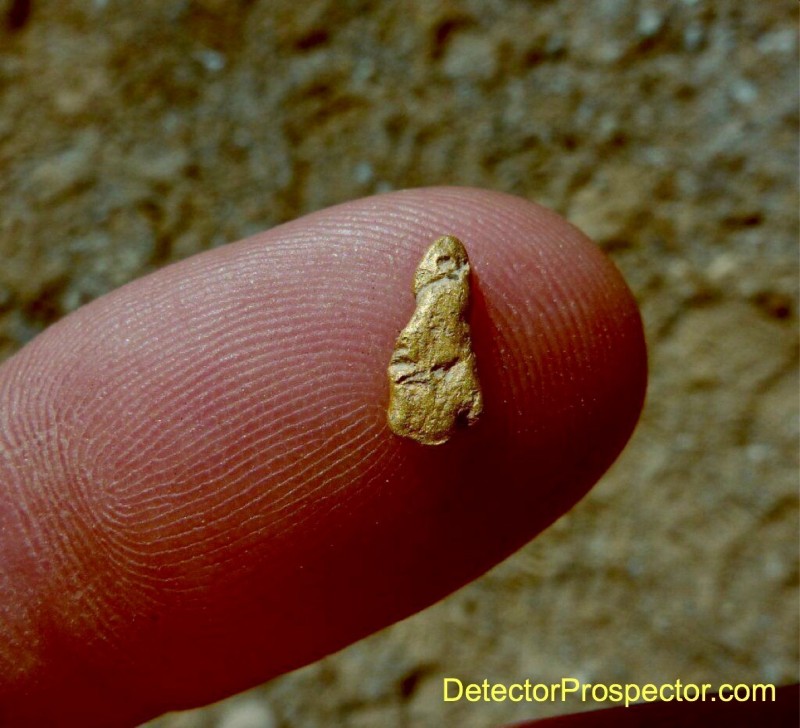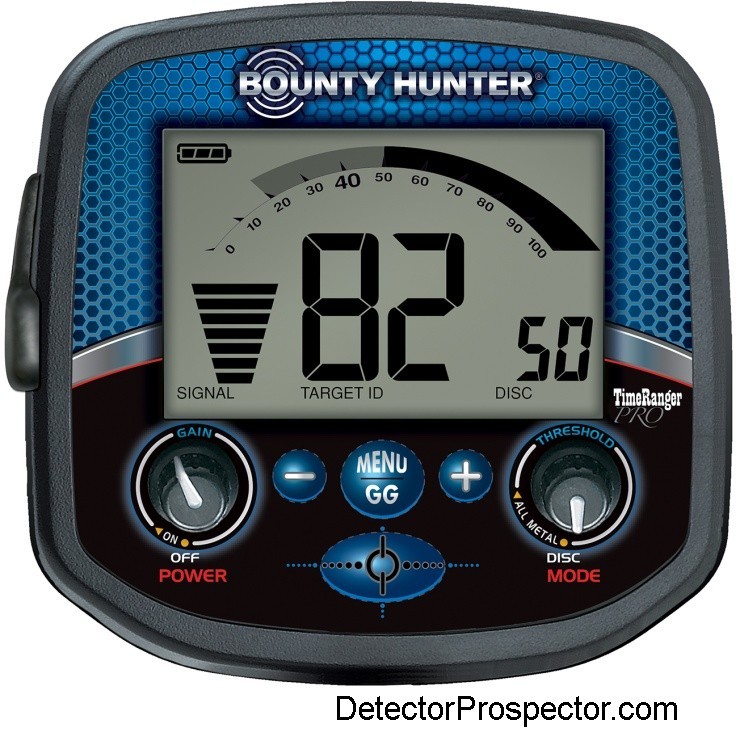-
Posts
19,751 -
Joined
Content Type
Forums
Detector Prospector Home
Detector Database
Downloads
Everything posted by Steve Herschbach
-

Jimmy Sierra TDI Pro Chest Harness !!!!
Steve Herschbach replied to RickUK's topic in White's Metal Detectors
I just use two of these or something similar. One on top d rings around neck, another on bottom d rings around back. Amazon -

Gold Nugget Air Tests GMX 24K MX7 MXT V3i
Steve Herschbach replied to Jeff McClendon's topic in White's Metal Detectors
Interesting they put the 6” round concentric on the GMX and 6 x 10 DD on the 24K, making it seem like the GMX gets more depth, even though they are the same detector. There actually is a 6” concentric for all models used in the test, which would be more apples to apples. Some of what you are seeing here is coil differences, not detector differences.- 17 replies
-
- whites mxt
- 24k gmx
-
(and 1 more)
Tagged with:
-
Yup, that’s generally how it goes with “partners”. So basically use the Alaska online claims search to research and contact claiming owners in your chosen area. It’s also worth contacting people who have claims advertised for sale to possibly make a deal with them. Claims often don’t sell or they have other claims or know somebody. At least you have easy contact info.
-
No.
-
You mean finding somebody with a claim and then leasing it from them? As opposed to finding a claim of your own? Either way it’s the same thing.... research. You have to decide what your range is... how far and how remote can you go? Then within range start researching the mining districts. Find a district that floats your boat, then dig into claims research. To lease a claim you have to research them, contact owners, and negotiate lease deals. To find your own claim you have to locate where claims are to find open land that may be worth staking. Or buy one. Permitting is just more research, either state land or federal land requirements. So you need to find out where you are going to be then dig in on learning all that. To be honest there is a lot to it and it is not for the faint of heart. All you can do is dive in. Start here... and here for kind of a generalized process with a different state as example... https://www.detectorprospector.com/forums/topic/3595-determining-where-to-prospect-for-gold-nuggets/
-
If the Simplex at $259 detected as well as any of the more expensive Nok/Mak detectors, what do you suppose might happen to sales of those more expensive models?
-
Now that is interesting indeed. Since the new Multi machine is going to be in the Simplex housing, I wonder if this is related? It would be easy to design coils for Simplex that would also work on a multifrequency detector. Like the way White’s V3i coils also work on the MXT. Would be a brilliant move if they were thinking in that direction.
-

Relic Hunting With TDI Beach Hunter
Steve Herschbach replied to Rebel8's topic in White's Metal Detectors
Not TDI specific but some information you may find helpful.... -
In general there are only two ways to increase target id stability, ignoring the EMI issue. That is a wild card, especially silent EMI that only exhibits when a target is detected. Be sure and have a perfect ground balance, and reduce sensitivity. Increasing discrimination can adversely affect sensitivity, so after 15 NokMak is applying secondary gain in an attempt to offset this. So if the machine gets unstable above 15 oddly enough it is even more important to reduce the gain. Smaller coils can help. The problem is target stability is achieved by reduced sensitivity which people interpret as meaning less depth, so I find that nine times out of ten getting target stability gets tossed out the door in the desire for more depth. It’s actually something the operator has control over, but it is a trade off. In general “hot” machines are less stable.
-

Finally Got A Day Of Decent Weather..
Steve Herschbach replied to Jim in Idaho's topic in Metal Detecting For Coins & Relics
Very nice Barber, congratulations! -
Now you know why I thought Multi-IQ was a game changer and why I cleaned house once I saw it in action. It simply works better in my ground, where I get a nice dime reading and dig an aluminum beaver tail when I use a single frequency machine. The best solution it would seem to me would be to stop thinking single frequency is the answer in your ground when it would seem pretty clear it is not. In some ground single frequency really is obsolete when it comes to discrimination. If you want something better, wait for the next version of Multi-IQ or maybe the NokMak Multi, whenever it appears. Or maybe even a Tarsacci. Single frequency by technological standards is ancient technology, so last century. Just sayin. The best use for single frequency in bad ground is for all metal nugget detecting, no discrimination, or at most ferrous/non-ferrous disc. Accurate non-ferrous target id in bad ground - not so much.
-

Coil Swap For My TDI Beach Hunter
Steve Herschbach replied to Tony's topic in White's Metal Detectors
In theory the TDI was made for mono coils and that's why Eric Foster and White's stuck with mono or modified mono. A DD may help in the worst ground but I have seen little to nothing ever said about DD coils being good for the machine. That's a pretty big clue as people will try anything. I know they will function but that's about it. Refer to the link GB posted above and you will see the focus is on mono. -

Coil Swap For My TDI Beach Hunter
Steve Herschbach replied to Tony's topic in White's Metal Detectors
The main issue is the dual field. A step in the right direction would be the 12" Aussie Mono and for even worse ground the 7.5" Aussie Mono. These coils were made originally specifically for the TDI Pro Oz version. The TDIBH is hardwired so not a plug and play thing but can be done. If I was to get another TDI the 7.5" Aussie Mono would be high on my wish list. https://www.google.com/search?q=white's+tdi+aussie+mono+coil -

Got A GMX For Jewelry, Brief Review
Steve Herschbach replied to Rick N. MI's topic in White's Metal Detectors
Thanks for selling me that 4x6 coil Rick. Lowers your cost and gets me a coil I was after without having to bother my crew in Alaska. Thanks! I am not surprised you like the GMX... I do like my 24K a lot also. That 6" concentric really is a sweetie, definitely my preferred coil for the machine. It is very hard to make a properly balanced metal detector that weighs less than 3.5 lbs. The secret is the leveraged weight of the coil out front has to be counterbalanced by an even heavier weight under the elbow. Overall it does make the machine heavier but counter-intuitively they feel lighter and create less arm strain. It's not holding up the weight that wears you out, it is the twisting motion you are fighting with an out of balance detector that generates the most strain. I have no complaint at all about the MX Sport/GMX design except I wish it had wireless for above water headphone use. White's GMX Sport Data & Reviews -

Garrett Announces New Sport Metal Detector Coming Soon
Steve Herschbach replied to abenson's topic in Garrett Metal Detectors
It sucks every bit as much if not more when Minelab does it. I'm not sure where it started, but if it was Minelab, then a pox on them for doing it! -
As phrunt said only coils made specifically for the T2 work on the T2; even F75 coils are not compatible, and they are very alike in most ways. The T2 was designed specifically for DD coils only, and when the F75 came out they added the ability to use concentric coils, but that made it not compatible with T2 coils. I would take EL NINO77s advice as far as Deeptech and Detech goes. If I had to pick one it would be the Deeptech, simply because DeTech detectors do not seem to have much of a following by comparison, so I feel like Deeptech is the safer choice. I know many people I trust who speak well of them.
-

Simplex Software Update - Update
Steve Herschbach replied to Sven1's topic in Nokta / Makro Metal Detectors
I just bought a used Dell D630 laptop on eBay with built in DVD recorder for $65. I got it mainly as a dedicated gaming device for the one and only computer game I ever play, a DOS based oldie that runs better on old hardware. Plus I like playing with computers anyway, my other toys outside of metal detecting. I also run Windows as a dual boot setup on my Mac Air, but you can usually buy a complete used Windows laptop for less than the cost of a Windows license. -
To be completely honest, getting a VLF detector that is both very good on tiny gold and very good on coins and that can handle very bad mineralization well is a little bit of wishful thinking. You will have to compromise, that is reality. In a perfect world where money was no issue, I would recommend you have at least two or maybe three detectors. The main one would be a SDC 2300 for finding small gold in difficult ground while being easy to operate. And then an Equinox 800 or XP ORX for small gold, trashy areas, and coin detecting. In your case and budget holding out for an XP ORX at a good price is not a bad plan. It is an excellent choice and easier to master than the Equinox 800 when it comes to nugget detecting. The main reason I am posting however is to encourage you to get a small coil for the T2 and have more faith in it. The T2 is actually one of the more popular VLF nuggets that has been sold worldwide for nugget detecting, with huge numbers sold in Africa. Unfortunately it fell victim to counterfeiters who ruined the market for it. I used the F75 extensively and did very well with it on gold nuggets. The F75 and T2 are practically the same detector. Here is an example of how small a nugget you should be able to find with the T2. Note I do not have very large fingers; I did not record the weight of this nugget unfortunately but I am guessing just a few grains, maybe 1/4 gram. This nugget was found with the stock 7” x 11” coil and I am certain I could do better with a smaller coil. Frankly, I have found the 13 kHz T2 and F75 to be very close to the 19 kHz Gold Bug Pro on gold nuggets, closer than people might guess. http://fisherlab.com/hobby/finds-Steve-Herschbach.htm Finally, I have never used a Vista Gold but at 30 kHz it probably does better than you think on tiny gold with a small coil. The ORX however is the safer, more proven choice.
-
-
When it comes to gold prospecting or anything employing the true threshold based all metal mode*, there is not a bit of difference between a Gold Bug Pro, F19, or Time Ranger. Turn the combination power/gain control on and to far right - full sensitivity. Turn the other knob, the mode/threshold control, to the right until you get a faint threshold. Push and hold the GG button while lowering and lifting the coil about a foot above the ground. The audio may vary the first pump but by the second or third the threshold will go even, you are ground balanced, release the GG button. If the detector will not properly ground balance, lower the gain a little, and repeat ground balance procedure. In extremely mineralized ground you may need to do this more than once to find the gain level that will allow the machine to properly ground balance. However, even while running a GBP in Australia in the worst ground I had almost no problem ground balancing this 19 kHz circuit. Finally, I find the ground grab button to ground balance a hair neutral for my taste, and for me tapping just once on the + button after ground balancing adds that smidge of positive ground balance I prefer. *Some detectors these days have an “all metal” setting that is just the discrimination mode with no items rejected. The electronic filtering is still in place but just set to 0. A true threshold based all metal mode completely disengages any discrimination filters and delivers the full power a metal detector is capable of. Some detectors, like the TRP, run the discrimination circuit in parallel and display the target id on the screen while the audio delivers the all metal results. This means you will sometimes hear a fringe target in the audio while getting no target id on the screen. These are faint targets that are not powerful enough to trigger the discrimination circuit, and which would be missed entirely if you are in a discrimination mode, even if no items are set to be rejected. This allows you to see and hear the genuine difference between a true threshold based all metal mode and a discrimination mode, and is referred to as Mixed Mode Processing. The lesson here is beware detectors that offer “all metal” modes that are just a discrimination mode by another name. They are not the same thing as offered on detectors with a true non-discrimination based all metal mode. For many applications I do like running this detector in all metal mode, and it takes me just seconds to be up and running. My threshold control stays where I want it, so just turn the power button to far right, quick ground balance, I’m good to go. I’ve used these machines far more in the all metal mode than the disc mode and in some respects it is what this detector is for me. A quick easy way to get access to a powerful and well behaved all metal detector with mixed mode processing (visual disc mode). The actual discrimination mode is very much a secondary aspect of the detector for most of my purposes. Here is how I came to settle on the 19 kHz FT machines versus the competition. The article is a tad dated but holds up well seven years later. The situation has not changed much, though for straight up gold prospecting we now have quite a few more high frequency options that have blurred the question by adding extra coin and relic type discrimination features. It was more cut and dried seven years ago. At this time for straight up gold prospecting I would go White’s Goldmaster 24K. One reason I got the TRP was to see how the 24K does compared to the TRP on non-prospecting tasks, a bit of a shoot out if you will, 19 kHz vs 48 kHz. Obviously the 24K has the edge for tiny gold. But how does the 24K do for coin or relic detecting compared to the 19 kHz models? I intend to find out.
-
Have you tried the Minelab website? The Vanquish is what it is, and except for possible bug fixes, will not change. https://www.minelab.com/contact-us
-

Where Is Fisher On The Impulse?
Steve Herschbach replied to PPP's topic in First Texas - Bounty Hunter, Fisher & Teknetics
-
I'm a gold guy so nuggets and jewelry, though I may putter around in some dense ferrous just for yucks. What people call relic hunting, but which I like to do just to play with the detector and hone my skills. Honestly not a detector I needed, just an impulse thing since I have a soft spot for the series and always wanted an F19 but never made it happen in a real way. It's just a grab and go fun detector. I admit I wanted a new toy to play with. If I was being rational I would say my 24K is the better nugget detector. The Equinox easily the better coin detector and as good if not better for jewelry. And I have a V3i, clearly superior for jewelry. I don't really do relics, the one thing this detector and coil combo shines at. I'd seriously put it up against a Deus with the NEL coil with no fear in the densest ferrous. But again, that's about last on my things I really do list. So did I need it? No. Did I want it? Yes. Some things don't have to make much sense with me, they just have to be fun, and I have always had fun with the 19 kHz FT machines. Like Noah said, a nice unit to leave in my truck... just in case. It's a fun dry beach small jewelry machine, but not something I do much of either. First place it will probably go is a tot lot to dig wadded aluminum foil.
-

Forum Friend To All Has Passed
Steve Herschbach replied to normmcq's topic in Detector Prospector Forum
Yeah, he had sold his GPZ as being too much for him physically anymore, and was interested in lighter units. So we have been chatting about the QED and Impulse etc. He was seriously thinking still of a trip back to Oz. Must be quite a shock for his wife, so sorry for her. 😞

